 So first a disclaimer, Josh Matthews of Dimension 5 and I have been friends since he started sharing his incense art with me a couple of years back. I mention this up front in reviews now because not only was he good at creating incenses when he got started but he gets better as he goes and this means my enthusiasm for his new work is also increasing. Any new package received I practically stop and dip in a bit before taking pictures and reviewing. If this counts as a bias then I’m owning up.
So first a disclaimer, Josh Matthews of Dimension 5 and I have been friends since he started sharing his incense art with me a couple of years back. I mention this up front in reviews now because not only was he good at creating incenses when he got started but he gets better as he goes and this means my enthusiasm for his new work is also increasing. Any new package received I practically stop and dip in a bit before taking pictures and reviewing. If this counts as a bias then I’m owning up.
Dimension 5 is one of the most interesting niches in incense, because it’s made by someone who starts with fine and rare ingredients across the board who then attempts to creatively generate stick incenses of similar quality. The incenses are correspondingly and quite fairly priced given the ingredients, but keep in mind as well that only in the highest end Japanese sticks will there be anything close to what you’ll experience here and in a side by side what Josh uses is often better. The sticks are shorter and often (not always) will burn fairly fast and this is considered a fair trade-off for maximum scent impact.
His new grouping, which I don’t think is entirely complete yet – there’s another incense or two to come I believe – is Dimension 5’s first venture into floral incenses. I’m sure you’ve read here that a lot of inexpensive florals aren’t great incenses, often they’re synthetic or approximate, whether it’s like a charcoal Indian floral or some of the low-end Japanese florals. But I think a lot of those who feel this way are equally impressed with a good floral when it’s done right. Dimension 5’s florals are great florals, extremely well done but they also incorporate woods and animalics and these interact with the floral notes in ways much cheaper florals don’t even approach. These are very upscale, at first they are almost a blitkrieg to the senses as your brain tries to cope with not only the quality involved but the way everything is carefully crafted to be complex and interactive. So it has to be noted here that even though I tend to write much more about these sorts of incenses, there is so much going on here that I can’t really cover everything with the few sticks I review (I end up having to hold one or two back as well!)
 Floral Neural is both the first incense on the list and also the name of the floral collection it’s a part of. The ingredients listed are tuberose, plumeria, Italian jasmine, Vietnamese agarwood, Papua agarwood,
Floral Neural is both the first incense on the list and also the name of the floral collection it’s a part of. The ingredients listed are tuberose, plumeria, Italian jasmine, Vietnamese agarwood, Papua agarwood,
sandalwood, clove, deer musk and ambergris. It’s an exceedingly complex incense with so much going on it feels like one’s attention is constantly moving from one interaction to another. These ingredients are strategically placed here to do so, in my impression you are dealing with a combination floral note, the woods, the mix of animalics, and then a touch of spice, but each of them interact with each other in ways that is intensely stimulating to the senses. I had just reviewed the Pushkar Temple Tuberose before this package came in (I’ll add the link when it’s published, it’s a bit later in the series), and while comparing the two did underline the similarities, the other florals in here also play a part, you actually could probably spend a lot of time just talking about these three. The tuberose is thus fairly recognizable. The plumeria (aka frangipani) imparts a lot of the sweeter floral notes (the tuberose is a little more robust). I also feel like Josh is being judicious with the jasmine oil, it seems to play out of the edges. The combination is intriguing, it’s as if you get buttery notes as a composite which immediately fractalize into a number of high resolute floral notes as soon as you focus.
The way the woods and the florals interact in this one remind me of a lot of Minorien’s Chrysanthemum (probably, because there are few floral incenses like this on the market, I’m not even sure I can think of another) and nowhere along the burn do you forget either one is there. If the florals get your immediate attention, then it will often shift to how these woods play in the background, partially because they are such high quality. The animalics feel a bit more to the back, I didn’t notice them right away, but you won’t be able to miss them, and they interact with both the woods and florals in a way that is surprising and latent. I really love the delicate ambergris touch on this one, it’s not a scent that will be apparent right away but it certainly mixes with the woods in a familiar way and broadens the overall aroma. In fact if I had any concerns about this scent at all it’s that it’s simply one of the most complex incenses I think I’ve ever come across and the burn time is relatively short, which may make you feel like your new discovery ends up being a cliffhanger.
 After Floral Neural, Elixir really goes for the direct impression. I’d imagine if it could be manufactured on a larger level then I’d probably spend a few weeks just burning it alone. You can smell the quality of the oils used directly from the fresh stick. The first three floral ingredients go a lot to making this incredible front-end work so well, although I would assume some of the animalics (deer musk, ambergris, and hyraceum) in here play a part in that as well, albeit more subtly. These, Bulgarian rose, Italian neroli and orange blossom, all sort of merge into such a brilliant mix that I found myself instantly addicted. I don’t quite know how to describe it except I kept getting the word “hive” and there was this amazing black currant-like note in the mix that won me over instantly, it’s something in the way the rose and orange-like oils mix that does it. This also moves towards a front scent like a cornucopia of berries in there, and then at times the florals take over without any of these notes. I’m not sure how much Bulgarian rose Josh used here but it has magnificent impact and it’s enough where the resolution of the petals kind of dances in the background (and occasionally the foreground) as if the neroli and orange blossom are as judiciously applied as not to smother it. The (2 types of) agarwood and sandalwood here are quite spicy together and so if the front-end kind of weaves its way around, it is always revealing facets of the deep woody mix below (one never forgets that the agarwoods used in these incenses are often way above those used in mainline Japanese incenses these days quality wise). The touches of spikenard, benzoin, and vanilla can also be detected although so many of these ingredients merge into this woody spice bottom that it continually makes your attention ping back and forth from the florals, it almost feels like you’d need a second batch to even explore more where these fall. Overall, Elixir is one of Josh’s masterpieces (although I’d admit I’d probably have a tough time choosing my top five) and one of the best new incenses I’ve tried all year.
After Floral Neural, Elixir really goes for the direct impression. I’d imagine if it could be manufactured on a larger level then I’d probably spend a few weeks just burning it alone. You can smell the quality of the oils used directly from the fresh stick. The first three floral ingredients go a lot to making this incredible front-end work so well, although I would assume some of the animalics (deer musk, ambergris, and hyraceum) in here play a part in that as well, albeit more subtly. These, Bulgarian rose, Italian neroli and orange blossom, all sort of merge into such a brilliant mix that I found myself instantly addicted. I don’t quite know how to describe it except I kept getting the word “hive” and there was this amazing black currant-like note in the mix that won me over instantly, it’s something in the way the rose and orange-like oils mix that does it. This also moves towards a front scent like a cornucopia of berries in there, and then at times the florals take over without any of these notes. I’m not sure how much Bulgarian rose Josh used here but it has magnificent impact and it’s enough where the resolution of the petals kind of dances in the background (and occasionally the foreground) as if the neroli and orange blossom are as judiciously applied as not to smother it. The (2 types of) agarwood and sandalwood here are quite spicy together and so if the front-end kind of weaves its way around, it is always revealing facets of the deep woody mix below (one never forgets that the agarwoods used in these incenses are often way above those used in mainline Japanese incenses these days quality wise). The touches of spikenard, benzoin, and vanilla can also be detected although so many of these ingredients merge into this woody spice bottom that it continually makes your attention ping back and forth from the florals, it almost feels like you’d need a second batch to even explore more where these fall. Overall, Elixir is one of Josh’s masterpieces (although I’d admit I’d probably have a tough time choosing my top five) and one of the best new incenses I’ve tried all year.
 The Nippon Kodo Kayuragi Osmanthus made quite an impression on me years ago in that I didn’t know osmanthus at all at that point, so it was nice to try something with such a distinct and less common floral note. But it also reminds me that picking out florals is a lot harder without an ingredients list. With X-Botanica, osmanthus is paired with carnation for the incense’s floral front end and it’s the kind of combination I’ve never seen before but should have been so inevitable really. As I got used to this I actually started thinking of it as being somewhat like the Floral Neural but wound a bit more tightly like the Elixir. Of the three incenses here, I think this floral mix is the most dominant in terms of really keeping your attention on that top end, even though the wood and animalics do so much to the depth of it, they are so well placed to just teach you the intertwining of these two really beautiful floral scents. I particularly loved how even if the top end felt stronger on the osmanthus end, there were glorious carnation notes that worked on a slightly more subtle level, when those come out it’s like look out.
The Nippon Kodo Kayuragi Osmanthus made quite an impression on me years ago in that I didn’t know osmanthus at all at that point, so it was nice to try something with such a distinct and less common floral note. But it also reminds me that picking out florals is a lot harder without an ingredients list. With X-Botanica, osmanthus is paired with carnation for the incense’s floral front end and it’s the kind of combination I’ve never seen before but should have been so inevitable really. As I got used to this I actually started thinking of it as being somewhat like the Floral Neural but wound a bit more tightly like the Elixir. Of the three incenses here, I think this floral mix is the most dominant in terms of really keeping your attention on that top end, even though the wood and animalics do so much to the depth of it, they are so well placed to just teach you the intertwining of these two really beautiful floral scents. I particularly loved how even if the top end felt stronger on the osmanthus end, there were glorious carnation notes that worked on a slightly more subtle level, when those come out it’s like look out.
I’ve mentioned before that Dimension 5 incenses are the sort of thing you sit with and pay attention to, so of course what do I do during the second stick of this? Get distracted for a second to do something else. Thankfully it was short, but when I got back to my seat I was like wow what is that, that’s amazing (giving me the couple seconds early in the morning to catch up). I love when this happens with a lot of inexpensive incenses but despite not wanting it to happen with something this premium, I’m kind of glad because it’s a good way of being reminded how utterly arresting something like this is, how high resolution and complex this array of ingredients is. The non-floral ingredients in this are Thai agarwood, cinnamon, muskrat, Hyraceum and Castoreum, which shows Josh’s skill on the animalics end because I probably couldn’t tell you much about the specifics of each of these ingredients except that they almost caress and cajole the florals here in ways that speak to their strengths.
Anyway for Dimension 5 incenses, I should mention I usually review after three sticks, the first one is because I nearly tear the box open and go through everything excitedly right away (usually splitting the stick into a couple of burns). Then I start the reviews with a second stick and get my basic thoughts down as a framework. Then I refine things and finish up with the third stick (or a bit more if necessary). I do want to say I’m more comfortable doing this with these incenses than with others simply because I don’t think there’s any amount of Dimension 5 sticks that would actually finalize my thoughts, because the game they set up of interlocking and complex scents will always bring up new facets and highlights, and you have to finish at some point.
We’ve seen what Dimension 5 can do with sandalwood, various agarwoods, kyara and now florals and absolutely all of them speak to the careful laboratory process at work here, these are incenses that have to satisfy Josh first before they make their way out into the world. There are more coming as well, Josh has mentioned new florals, new kyaras and forays into conifers, so he’s always busy creating. I am confident these would satisfy the most discerning of incense connoisseurs (and please, if you have tried these, consider leaving some comments here about them). If interested in purchasing, contact Josh at dimension5incense@gmail.com for pricing and information. Josh also talks about his incenses at www.instagram.com/dimension_5_incense.
 Golog Tibetan Incense is “a mild, smooth vegetarian incense with intriguing subtleties. [it c]ontains Red and White Sandalwoods, Agarwood, Saussure involucrata, Rhodiola Rosea, Rhizome of Conic Gymnadenia [several of these last three look to be part of Tibetan traditional medicine or healing], Nutmeg, Saffron, Clove, Cardamon, Fructus Amomi [cardamom] and other precious ingredients.” This is obviously a huge list and it can be difficult in such a big list to even determine how some of these traditional ingredients fit together, but if you just follow the ones you know you’ll still have some idea of what area of Tibetan incense this roughly falls in. The incense comes in a nice sturdy cardboard tube, but one thing you notice after the handsome presentation and ingredient list is just what a mild incense this is at heart.
Golog Tibetan Incense is “a mild, smooth vegetarian incense with intriguing subtleties. [it c]ontains Red and White Sandalwoods, Agarwood, Saussure involucrata, Rhodiola Rosea, Rhizome of Conic Gymnadenia [several of these last three look to be part of Tibetan traditional medicine or healing], Nutmeg, Saffron, Clove, Cardamon, Fructus Amomi [cardamom] and other precious ingredients.” This is obviously a huge list and it can be difficult in such a big list to even determine how some of these traditional ingredients fit together, but if you just follow the ones you know you’ll still have some idea of what area of Tibetan incense this roughly falls in. The incense comes in a nice sturdy cardboard tube, but one thing you notice after the handsome presentation and ingredient list is just what a mild incense this is at heart. Falling under IT’s traditional therapeutic and relaxation category, it’s not hard to zero in on the agarwood and sandalwood in the mix as both woods are usually the basis of the general aroma in this sort of class. It means that there aren’t quite as many high altitude type trees and resins that usually invigorate or push the incense in a greener direction. However, it’s still quite cooling even with all the spices. You can easily get every one of these, the nutmeg and cardamom are definitely quite prominent on top, a pleasure if you like both of these like I do. I’m not sure any of these ingredients quite support what is a nice breadth to the incense, I would imagine the central, almost liquid-like note is a conglomerate of a whole number of things lost behind the secret recipe. But it’s definitely the kind of individual note that will go a long way with further experience, and it’s still something I haven’t fully settled on even half a dozen sticks. I think maybe the biggest factor I notice is this seems to be quite refined for a therapuetic incense, which may also be part of why this is in a higher price range than much of its class. I do find myself edging up just a little with each new experience, there’s something about its nutmeg content that kind of reminds me a little of brown ales, which is weirdly a metaphor I might be able to stick with for the overall incense.
Falling under IT’s traditional therapeutic and relaxation category, it’s not hard to zero in on the agarwood and sandalwood in the mix as both woods are usually the basis of the general aroma in this sort of class. It means that there aren’t quite as many high altitude type trees and resins that usually invigorate or push the incense in a greener direction. However, it’s still quite cooling even with all the spices. You can easily get every one of these, the nutmeg and cardamom are definitely quite prominent on top, a pleasure if you like both of these like I do. I’m not sure any of these ingredients quite support what is a nice breadth to the incense, I would imagine the central, almost liquid-like note is a conglomerate of a whole number of things lost behind the secret recipe. But it’s definitely the kind of individual note that will go a long way with further experience, and it’s still something I haven’t fully settled on even half a dozen sticks. I think maybe the biggest factor I notice is this seems to be quite refined for a therapuetic incense, which may also be part of why this is in a higher price range than much of its class. I do find myself edging up just a little with each new experience, there’s something about its nutmeg content that kind of reminds me a little of brown ales, which is weirdly a metaphor I might be able to stick with for the overall incense. In 2021 I
In 2021 I 
 The
The  So now we enter a larger group of incenses mostly sold in 50g packages. This is really where the Pushkar Temple Incense line finds a lot of its fantastic incenses so there are a lot of good scents to share. This is the first of six installments in this part and the first breakdown carries over from the 100g series in that this is another group of scents all titled as floras and nearly all are big step ups from the 100g floras.
So now we enter a larger group of incenses mostly sold in 50g packages. This is really where the Pushkar Temple Incense line finds a lot of its fantastic incenses so there are a lot of good scents to share. This is the first of six installments in this part and the first breakdown carries over from the 100g series in that this is another group of scents all titled as floras and nearly all are big step ups from the 100g floras.

 The
The 
 Drigung’s
Drigung’s  So first a disclaimer, Josh Matthews of Dimension 5 and I have been friends since he started sharing his incense art with me a couple of years back. I mention this up front in reviews now because not only was he good at creating incenses when he got started but he gets better as he goes and this means my enthusiasm for his new work is also increasing. Any new package received I practically stop and dip in a bit before taking pictures and reviewing. If this counts as a bias then I’m owning up.
So first a disclaimer, Josh Matthews of Dimension 5 and I have been friends since he started sharing his incense art with me a couple of years back. I mention this up front in reviews now because not only was he good at creating incenses when he got started but he gets better as he goes and this means my enthusiasm for his new work is also increasing. Any new package received I practically stop and dip in a bit before taking pictures and reviewing. If this counts as a bias then I’m owning up.  Floral Neural is both the first incense on the list and also the name of the floral collection it’s a part of. The ingredients listed are tuberose, plumeria, Italian jasmine, Vietnamese agarwood, Papua agarwood,
Floral Neural is both the first incense on the list and also the name of the floral collection it’s a part of. The ingredients listed are tuberose, plumeria, Italian jasmine, Vietnamese agarwood, Papua agarwood, After Floral Neural, Elixir really goes for the direct impression. I’d imagine if it could be manufactured on a larger level then I’d probably spend a few weeks just burning it alone. You can smell the quality of the oils used directly from the fresh stick. The first three floral ingredients go a lot to making this incredible front-end work so well, although I would assume some of the animalics (deer musk, ambergris, and hyraceum) in here play a part in that as well, albeit more subtly. These, Bulgarian rose, Italian neroli and orange blossom, all sort of merge into such a brilliant mix that I found myself instantly addicted. I don’t quite know how to describe it except I kept getting the word “hive” and there was this amazing black currant-like note in the mix that won me over instantly, it’s something in the way the rose and orange-like oils mix that does it. This also moves towards a front scent like a cornucopia of berries in there, and then at times the florals take over without any of these notes. I’m not sure how much Bulgarian rose Josh used here but it has magnificent impact and it’s enough where the resolution of the petals kind of dances in the background (and occasionally the foreground) as if the neroli and orange blossom are as judiciously applied as not to smother it. The (2 types of) agarwood and sandalwood here are quite spicy together and so if the front-end kind of weaves its way around, it is always revealing facets of the deep woody mix below (one never forgets that the agarwoods used in these incenses are often way above those used in mainline Japanese incenses these days quality wise). The touches of spikenard, benzoin, and vanilla can also be detected although so many of these ingredients merge into this woody spice bottom that it continually makes your attention ping back and forth from the florals, it almost feels like you’d need a second batch to even explore more where these fall. Overall, Elixir is one of Josh’s masterpieces (although I’d admit I’d probably have a tough time choosing my top five) and one of the best new incenses I’ve tried all year.
After Floral Neural, Elixir really goes for the direct impression. I’d imagine if it could be manufactured on a larger level then I’d probably spend a few weeks just burning it alone. You can smell the quality of the oils used directly from the fresh stick. The first three floral ingredients go a lot to making this incredible front-end work so well, although I would assume some of the animalics (deer musk, ambergris, and hyraceum) in here play a part in that as well, albeit more subtly. These, Bulgarian rose, Italian neroli and orange blossom, all sort of merge into such a brilliant mix that I found myself instantly addicted. I don’t quite know how to describe it except I kept getting the word “hive” and there was this amazing black currant-like note in the mix that won me over instantly, it’s something in the way the rose and orange-like oils mix that does it. This also moves towards a front scent like a cornucopia of berries in there, and then at times the florals take over without any of these notes. I’m not sure how much Bulgarian rose Josh used here but it has magnificent impact and it’s enough where the resolution of the petals kind of dances in the background (and occasionally the foreground) as if the neroli and orange blossom are as judiciously applied as not to smother it. The (2 types of) agarwood and sandalwood here are quite spicy together and so if the front-end kind of weaves its way around, it is always revealing facets of the deep woody mix below (one never forgets that the agarwoods used in these incenses are often way above those used in mainline Japanese incenses these days quality wise). The touches of spikenard, benzoin, and vanilla can also be detected although so many of these ingredients merge into this woody spice bottom that it continually makes your attention ping back and forth from the florals, it almost feels like you’d need a second batch to even explore more where these fall. Overall, Elixir is one of Josh’s masterpieces (although I’d admit I’d probably have a tough time choosing my top five) and one of the best new incenses I’ve tried all year. The
The  I have reviewed a number of different incenses in different shapes and sizes from the Bhutanese company
I have reviewed a number of different incenses in different shapes and sizes from the Bhutanese company  Very few Bhutanese incenses would be what I call perfume heavy, but there is a really profound oil or perfume mix that fronts this one, it’s much deeper than any other Bhutanese stick I can think of. It is something of an accentuation of notes that are part of the main Bhutanese red stick formula and that you’ll find in many others (I’d click on Bhutan on the left, there’s really way too many to name here). In many of these incenses I will mention both the cherry and sandalwood notes and these feel really turned up in the Sung Sung, in fact there’s a feeling that this is about the loudest sandalwood ever gets in a Tibetan style stick, which is no mean feat. The cherry could just as easily be read as raspberry with it turned up like this, but any individual fruit idiosyncracies would be covered by a very nice cinnamon mix in the middle (something the sandalwood interacts with quite nicely). It all sort of combines together in a way that is really smooth and easy on the nose, particularly by the time you’re mid way through a burn. One might get even more out of something like this if you’re coming from another Bhutanese red (or purple) stick in comparison, because the intensity change is so obvious. Definitely a worthy pick up especially for its price range, it’s not only a friendly introduction to the style, but it should surprise those who have already tried a few incenses from this country.
Very few Bhutanese incenses would be what I call perfume heavy, but there is a really profound oil or perfume mix that fronts this one, it’s much deeper than any other Bhutanese stick I can think of. It is something of an accentuation of notes that are part of the main Bhutanese red stick formula and that you’ll find in many others (I’d click on Bhutan on the left, there’s really way too many to name here). In many of these incenses I will mention both the cherry and sandalwood notes and these feel really turned up in the Sung Sung, in fact there’s a feeling that this is about the loudest sandalwood ever gets in a Tibetan style stick, which is no mean feat. The cherry could just as easily be read as raspberry with it turned up like this, but any individual fruit idiosyncracies would be covered by a very nice cinnamon mix in the middle (something the sandalwood interacts with quite nicely). It all sort of combines together in a way that is really smooth and easy on the nose, particularly by the time you’re mid way through a burn. One might get even more out of something like this if you’re coming from another Bhutanese red (or purple) stick in comparison, because the intensity change is so obvious. Definitely a worthy pick up especially for its price range, it’s not only a friendly introduction to the style, but it should surprise those who have already tried a few incenses from this country.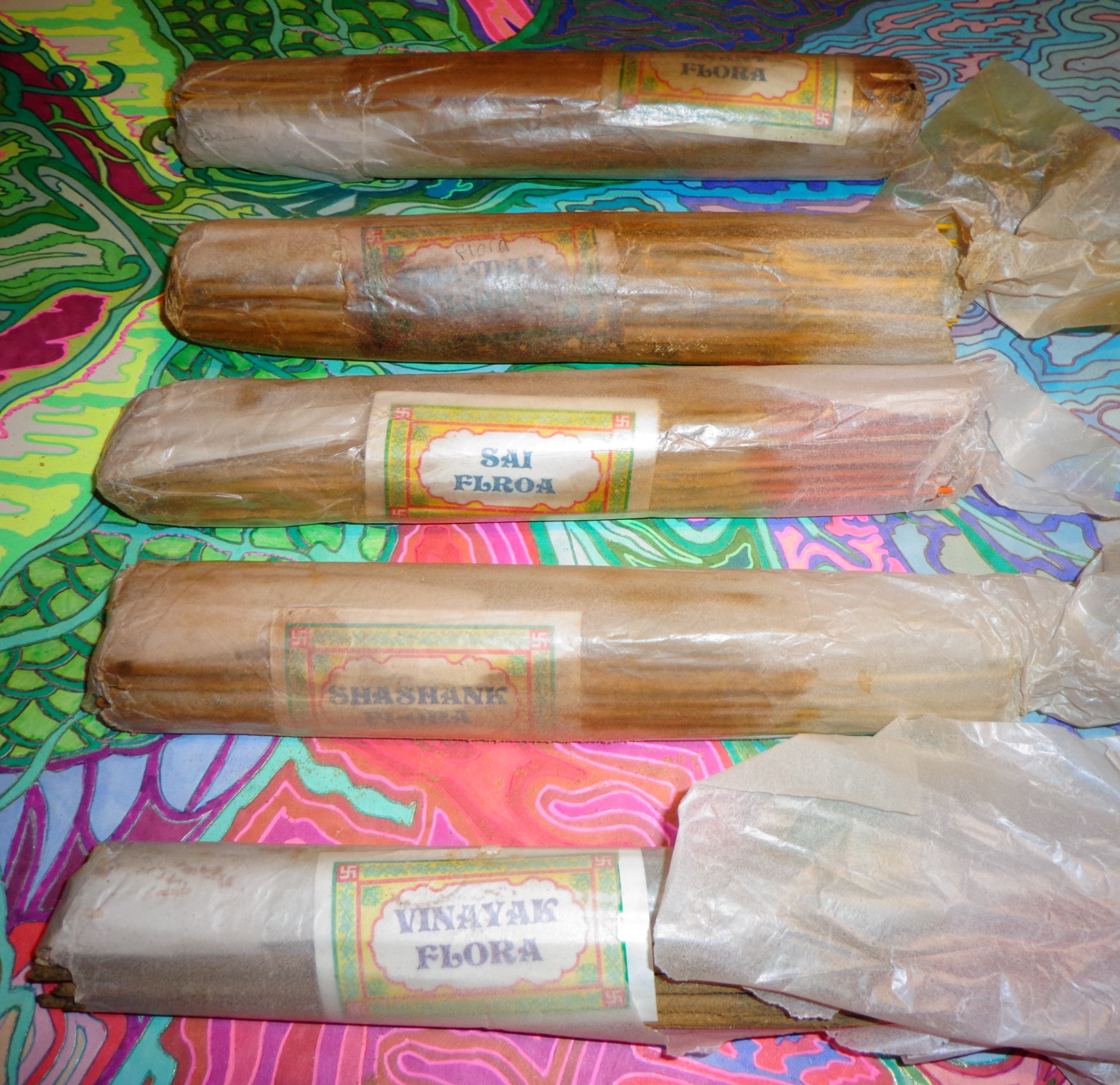 So the final group of the Pushkar Temple incenses packaged as 100g bundles are all floras. Those familiar with the style will notice they have a Sai Flora, which in many ways is the most well-known/popular flora known in Indian incense through the dark red package that shows up nearly everywhere (I used to think this was something like second in popularity to blue box Nag Champa). Many floras, even outside of PT will have orange-dipped bamboo sticks and certainly PT’s Sai Flora and a few others do as well. Floras are generally highly perfumed mixes of so many elements it is almost impossible to parse them separately in an aroma, but it’s probably safe to say they are mostly mixes of florals and often fruits.
So the final group of the Pushkar Temple incenses packaged as 100g bundles are all floras. Those familiar with the style will notice they have a Sai Flora, which in many ways is the most well-known/popular flora known in Indian incense through the dark red package that shows up nearly everywhere (I used to think this was something like second in popularity to blue box Nag Champa). Many floras, even outside of PT will have orange-dipped bamboo sticks and certainly PT’s Sai Flora and a few others do as well. Floras are generally highly perfumed mixes of so many elements it is almost impossible to parse them separately in an aroma, but it’s probably safe to say they are mostly mixes of florals and often fruits.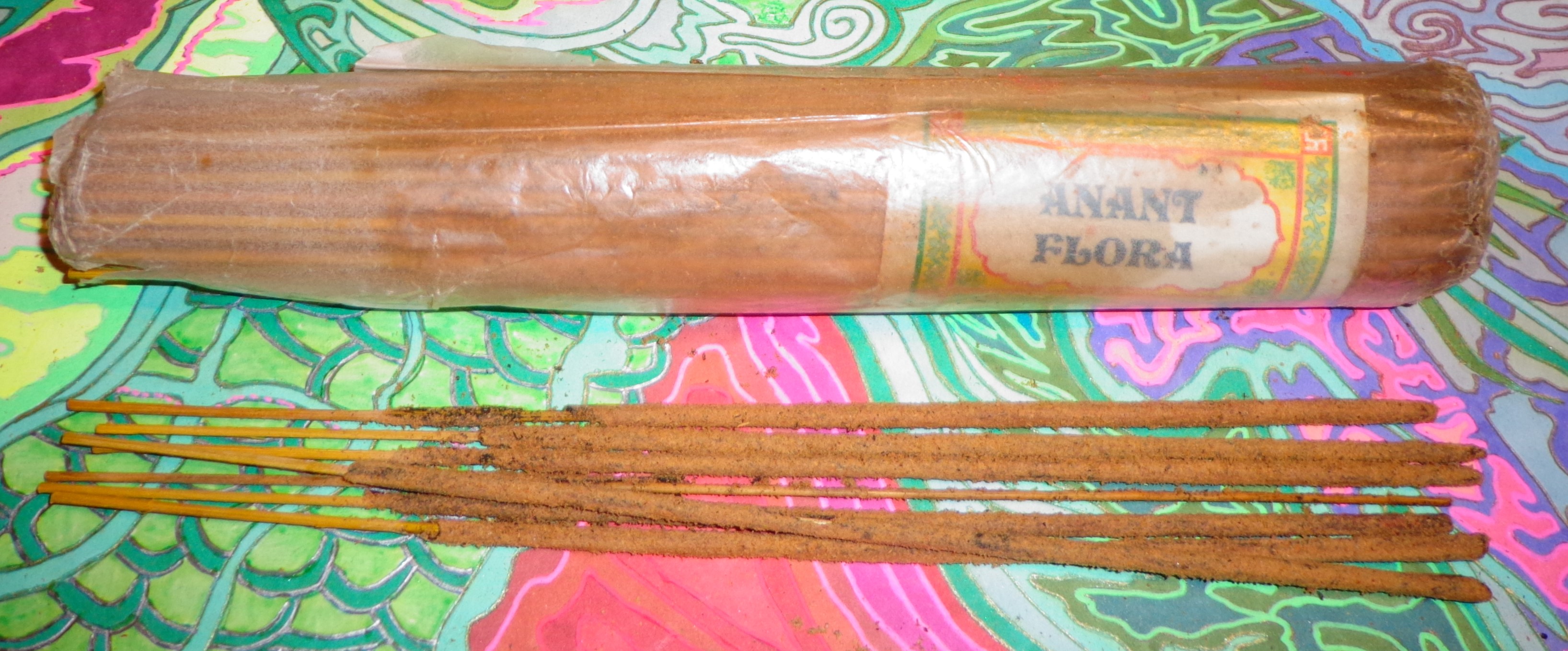
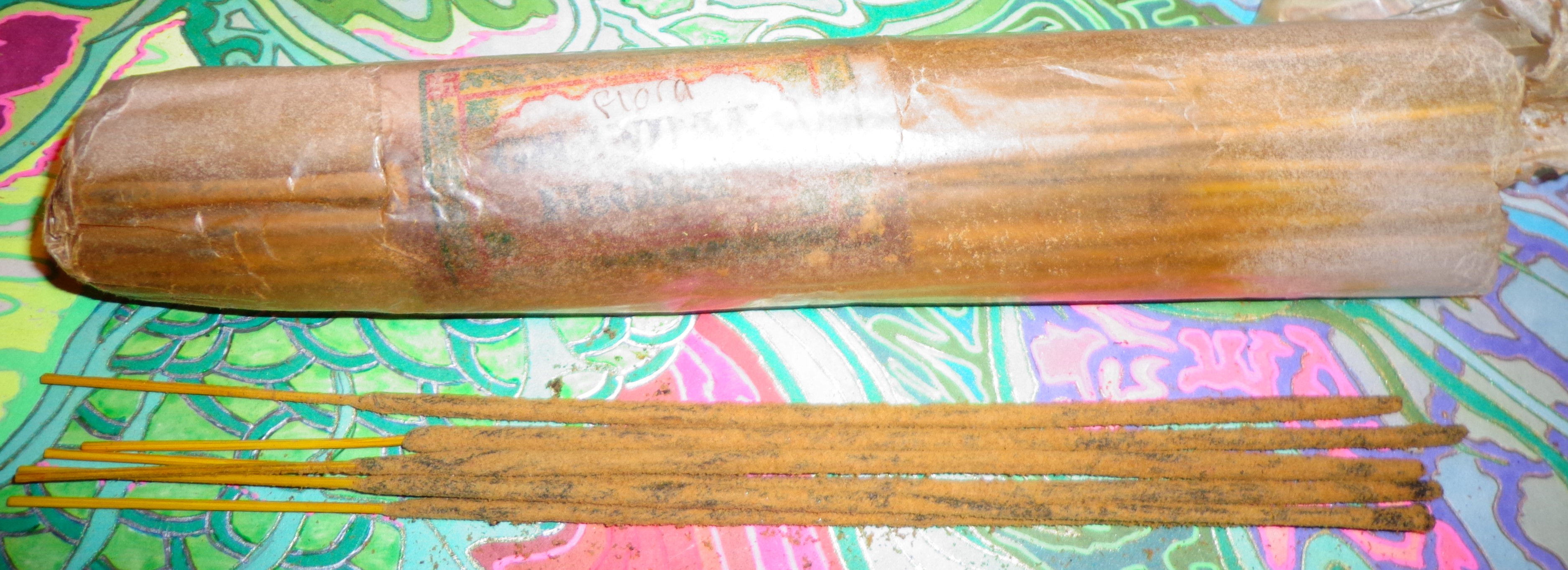 The
The 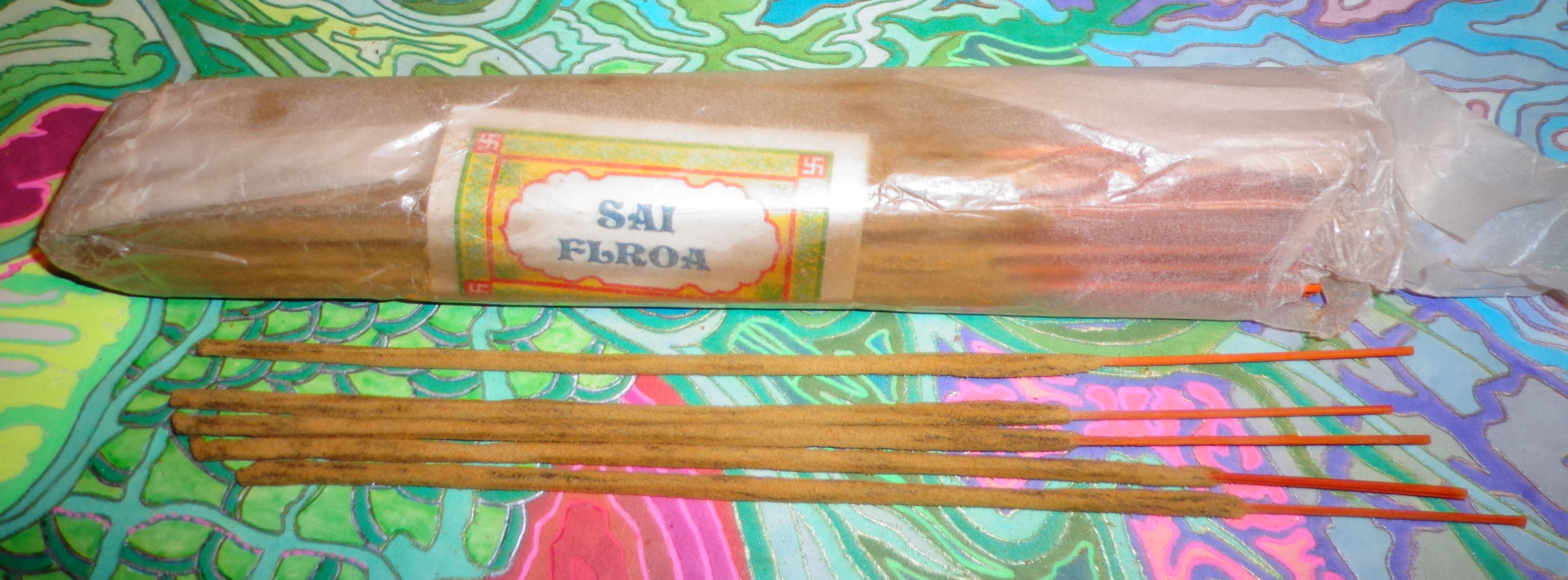 Pushkar’s
Pushkar’s 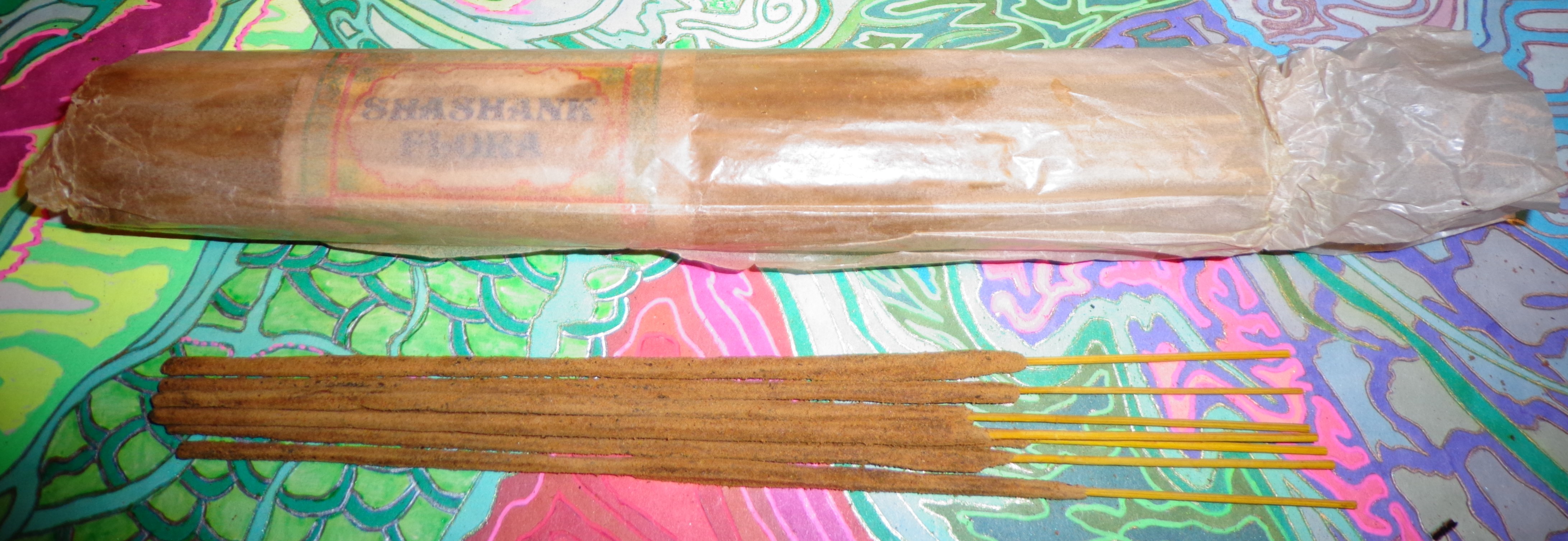 I’m not even sure I’d consider
I’m not even sure I’d consider 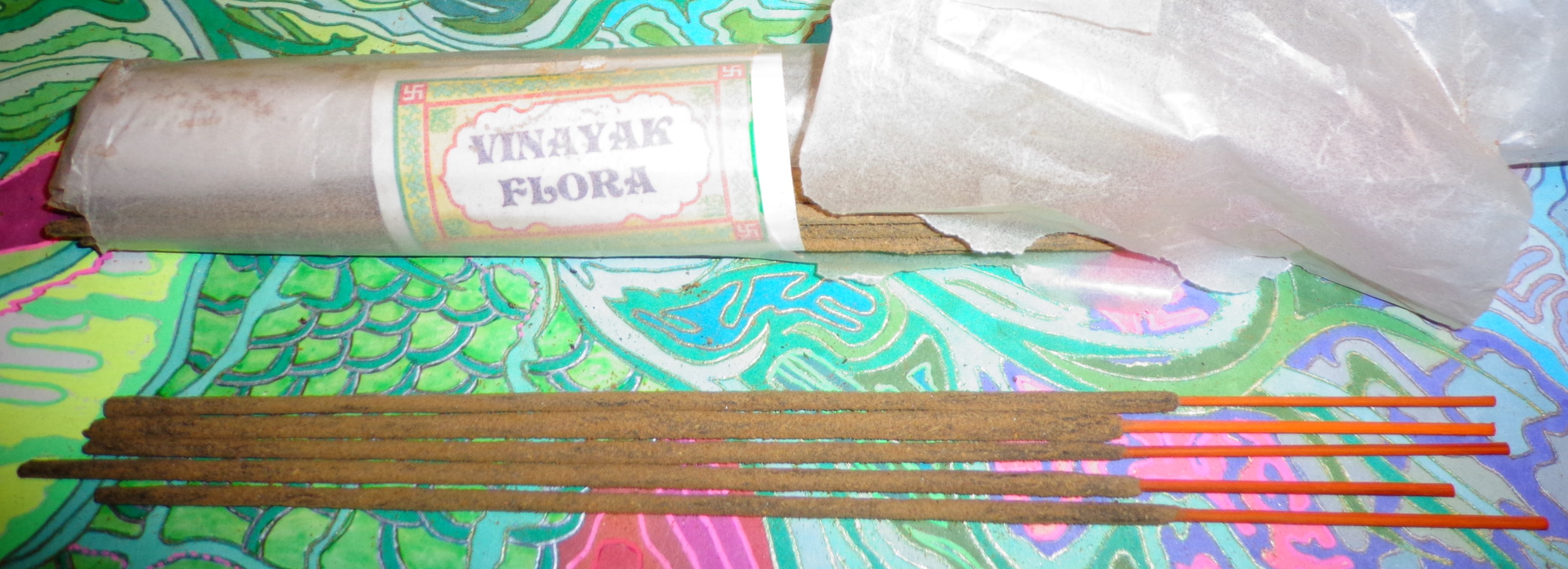 The
The 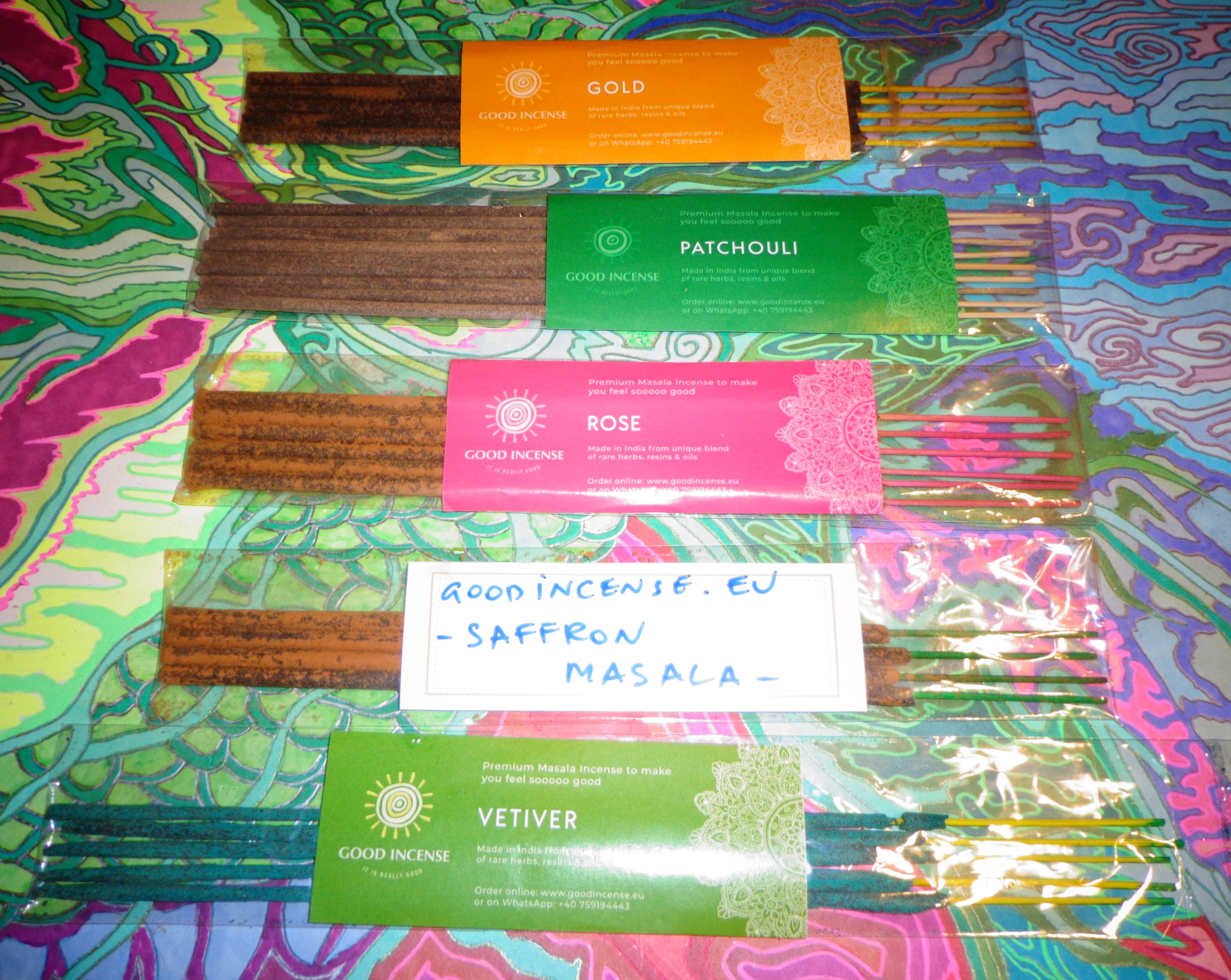 I hadn’t put it together right away in my head, but
I hadn’t put it together right away in my head, but 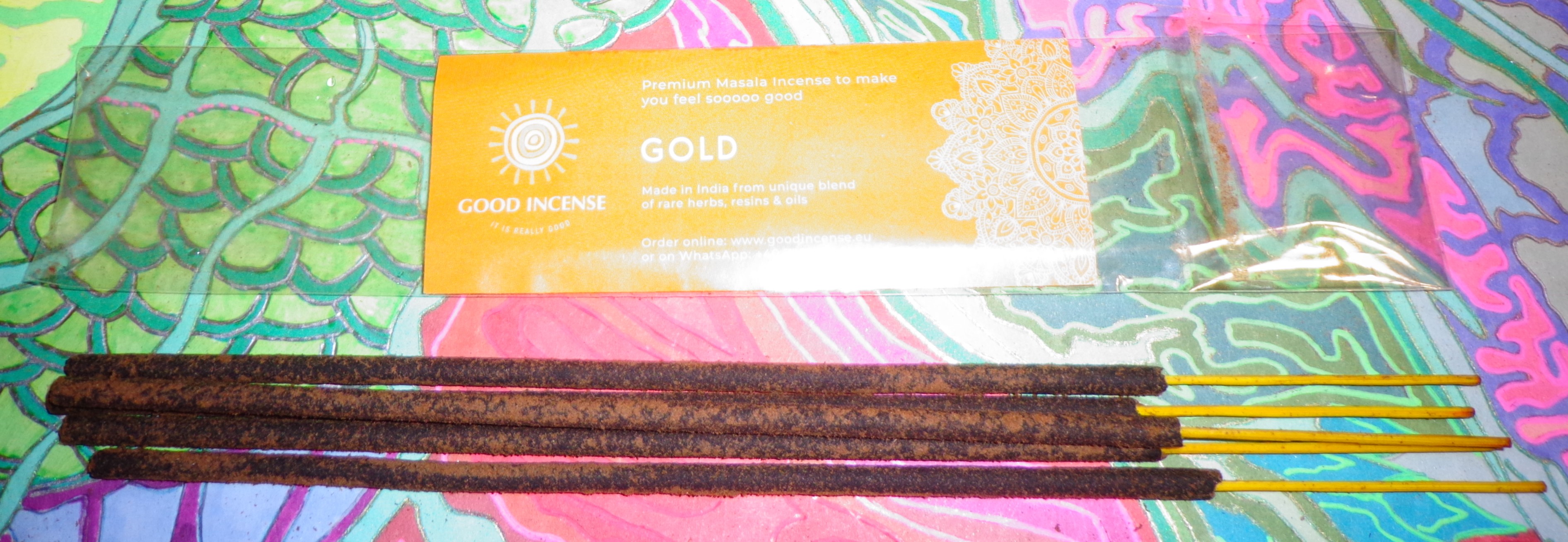 The first of these we’ll discuss is the
The first of these we’ll discuss is the 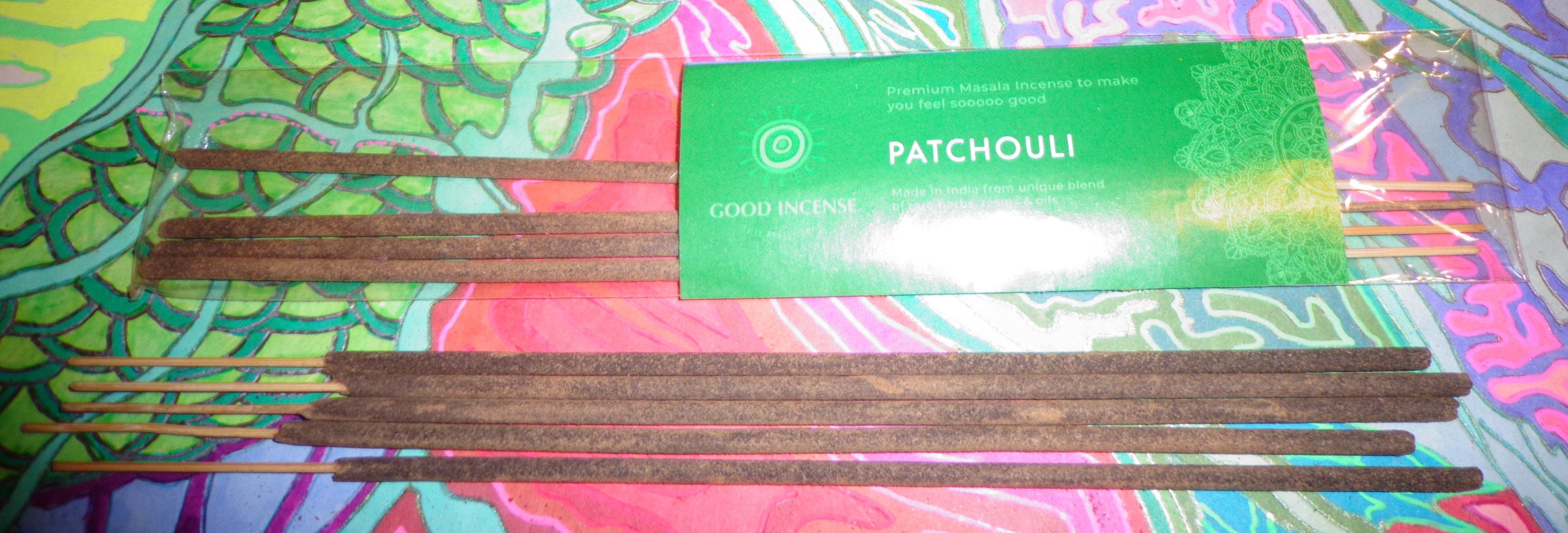 The Good Incense
The Good Incense 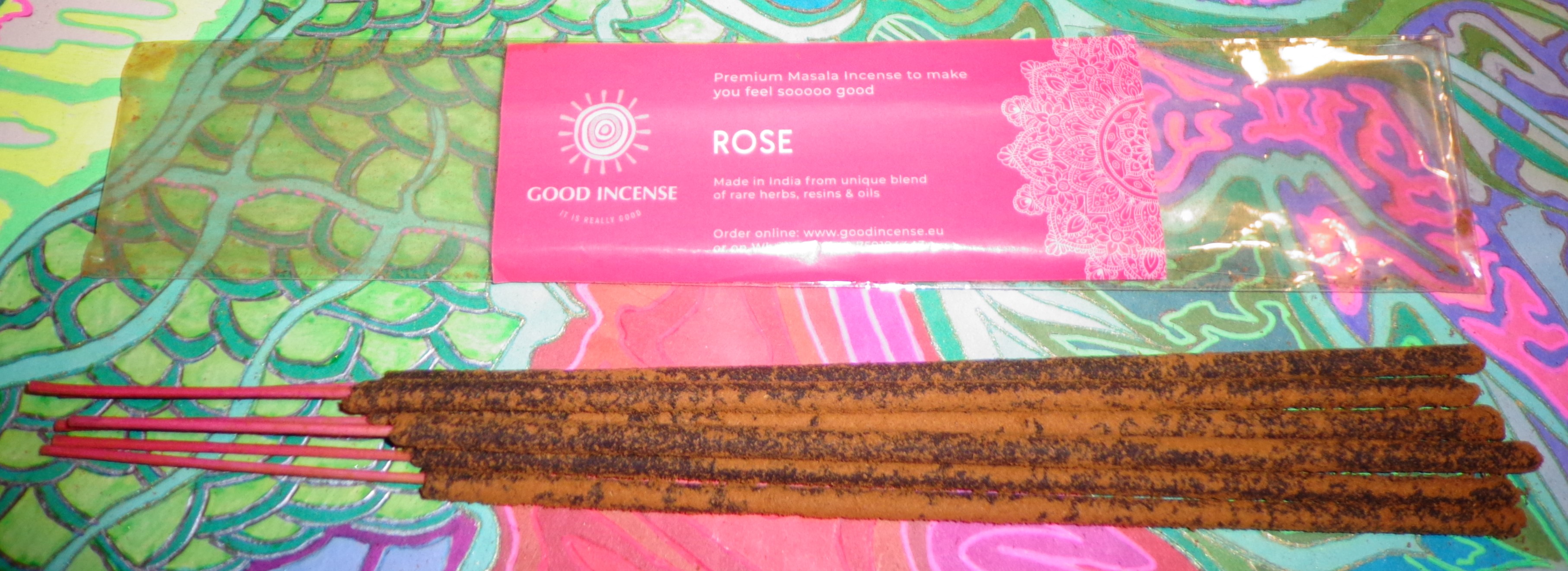 I’ve probably walked out my story about walking through Sacramento’s Capitol Rose Garden a dozen times by now, and I do because it sets a sort of basis for how I perceive rose. And I don’t mean something like a deep Bulgarian rose absolute or something more expensive and premium, I just mean that it’s a measure for getting what a bunch of roses smell like walking between them. I bring this up because the Good Incense
I’ve probably walked out my story about walking through Sacramento’s Capitol Rose Garden a dozen times by now, and I do because it sets a sort of basis for how I perceive rose. And I don’t mean something like a deep Bulgarian rose absolute or something more expensive and premium, I just mean that it’s a measure for getting what a bunch of roses smell like walking between them. I bring this up because the Good Incense 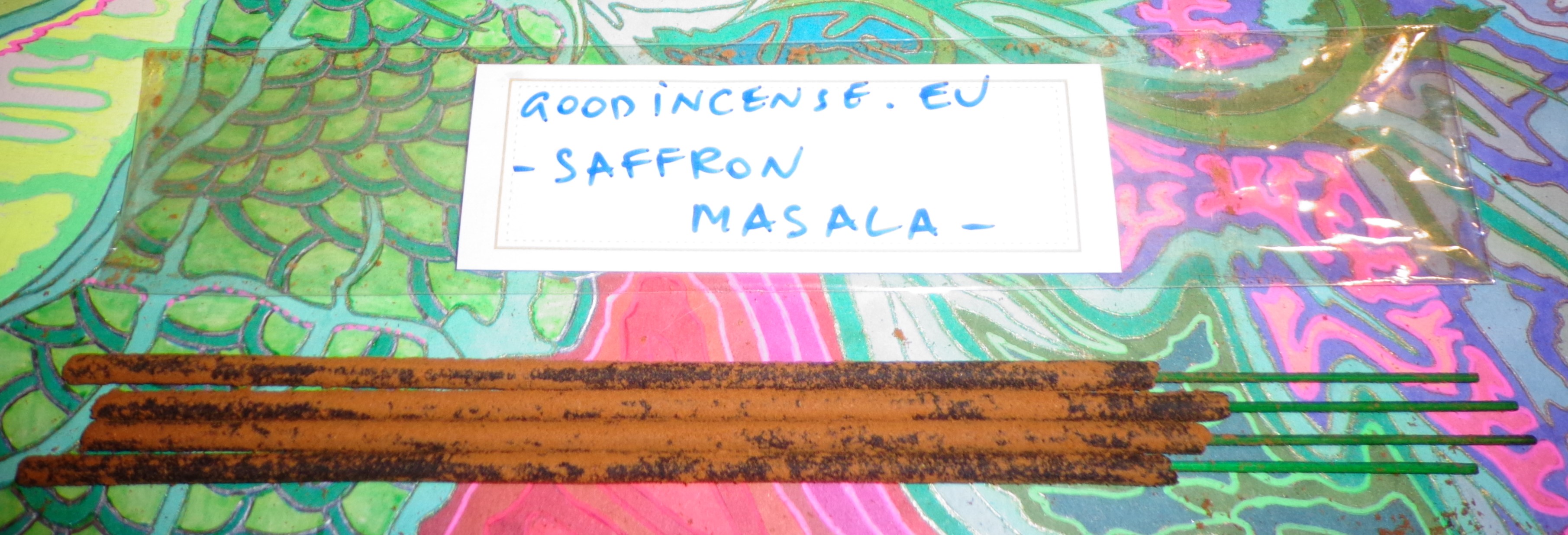 And to add to that lineage is a very nice
And to add to that lineage is a very nice 

 Where Samye Monastery is always dense, complex, and rich, Samye Chimpu is a much simpler affair sticking largely to a woody/evergreen sort of mix, without any of the deep musk or amber notes of the flagship. It absolutely has a prevalent high altitude resin content in the mix (both from tree wood and likely resin like frankincense) and has the kind of base that you will often see in incenses that include white and red sandalwood. It is not a spectacular, dangerous or even massively complex incense, and despite its high campfire sort of content, the overall bouquet is actually surprisingly soft and deceptively intricate. The sticks seem to burn a bit faster than incenses with heavy woods in them as well, and I sense a bit of an herbal mix that reminds me just a touch of burning leaves, maybe some rhododendron or saffron and undoubtedly a few things I’ve never tried on their own. But it’s also one of those incenses that generates its smell largely outside of the burning stick itself, which is always a neat thing and in particular that herb and high altitude resin mix really comes out in the environmental range rather than if you were to waft the smoke closely. So it’s very possible that this is a slow burner, not something that reveals exactly what it does in early sticks. It urges you to pay attention to its unfolding. Even after something like half a dozen sticks, I keep waiting for this to pull a rabbit out of its hat, because it tends to fool my expectations and scramble my notes a bit. One burn it will be all woody, the next I’m wondering why I missed all the resin content. I imagine this is yet another incenses in the monastery category I’ll like even more long after this review is posted.
Where Samye Monastery is always dense, complex, and rich, Samye Chimpu is a much simpler affair sticking largely to a woody/evergreen sort of mix, without any of the deep musk or amber notes of the flagship. It absolutely has a prevalent high altitude resin content in the mix (both from tree wood and likely resin like frankincense) and has the kind of base that you will often see in incenses that include white and red sandalwood. It is not a spectacular, dangerous or even massively complex incense, and despite its high campfire sort of content, the overall bouquet is actually surprisingly soft and deceptively intricate. The sticks seem to burn a bit faster than incenses with heavy woods in them as well, and I sense a bit of an herbal mix that reminds me just a touch of burning leaves, maybe some rhododendron or saffron and undoubtedly a few things I’ve never tried on their own. But it’s also one of those incenses that generates its smell largely outside of the burning stick itself, which is always a neat thing and in particular that herb and high altitude resin mix really comes out in the environmental range rather than if you were to waft the smoke closely. So it’s very possible that this is a slow burner, not something that reveals exactly what it does in early sticks. It urges you to pay attention to its unfolding. Even after something like half a dozen sticks, I keep waiting for this to pull a rabbit out of its hat, because it tends to fool my expectations and scramble my notes a bit. One burn it will be all woody, the next I’m wondering why I missed all the resin content. I imagine this is yet another incenses in the monastery category I’ll like even more long after this review is posted.
You must be logged in to post a comment.